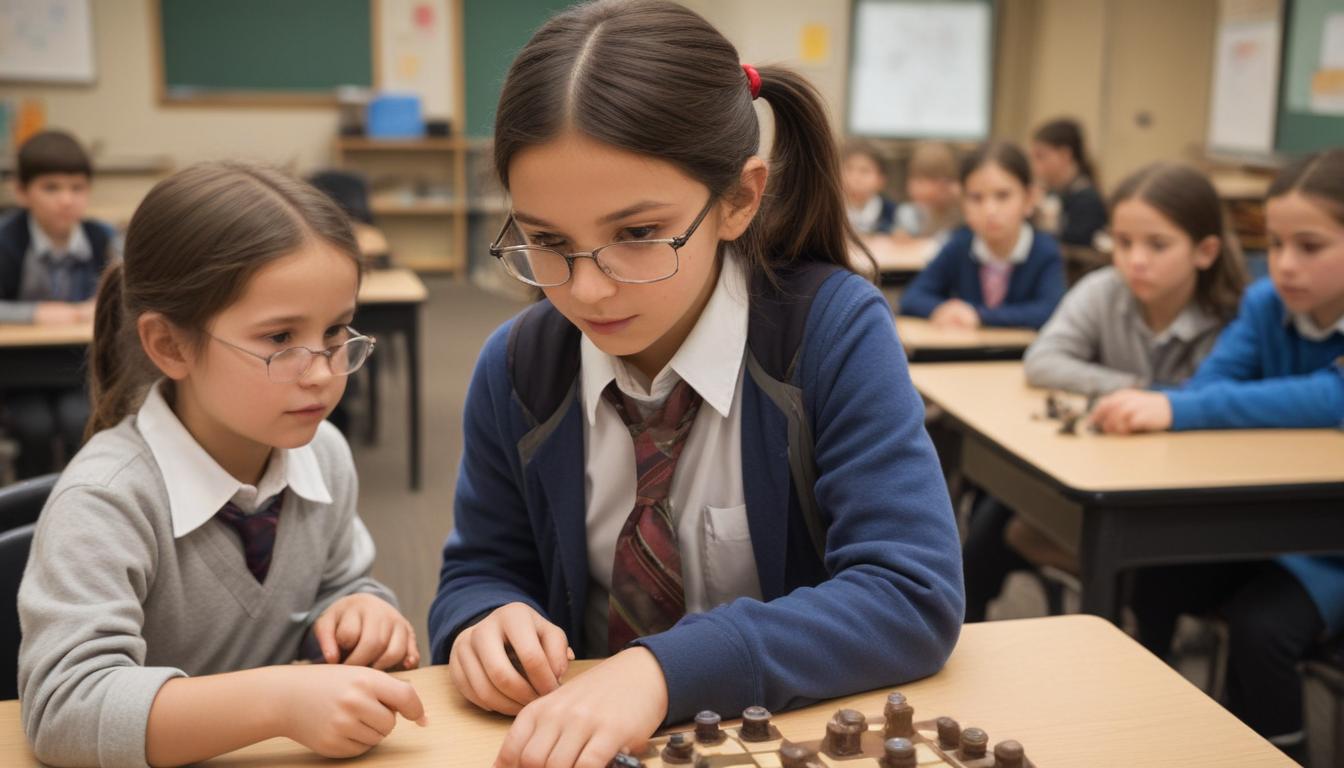Now Reading: Level Up K-12 Education with Games
- 01
Level Up K-12 Education with Games
Level Up K-12 Education with Games

The Role of Game-Based Learning in K-12 Education
Does the sound of the final bell trigger a sigh of relief in your classroom? For many educators and parents, the daily struggle to keep students engaged is a familiar challenge. Traditional lectures and worksheets can leave learners feeling disconnected, staring at the clock and retaining little of the information presented.
You know the material is important, but how do you break through the wall of apathy and make learning an experience they genuinely look forward to? The solution may be found not in a new textbook, but in a world students already know and love.
Imagine transforming that disinterest into focused excitement. Game-based learning is a powerful pedagogical approach that leverages the mechanics of games—like points, competition, and storytelling—to achieve specific educational goals. It’s not about replacing teachers or abandoning the curriculum; it’s about equipping educators with a dynamic tool that turns passive students into active participants. By tapping into a child’s natural inclination to play, we can unlock a new level of motivation, critical thinking, and knowledge retention.
Beyond the Joystick The Science of Engaging Students
Building Motivation Through Play
The magic of game-based learning lies deep within its psychological framework. When students play a well-designed educational game, their brains respond by releasing dopamine, a neurotransmitter associated with pleasure and motivation. Every correct answer, solved puzzle, or completed level acts as a small reward, creating a positive feedback loop that encourages them to keep trying. This system of intrinsic motivation is far more powerful than the external pressure of grades alone, as it fosters a genuine desire to master the material for the sake of progress and achievement.
Developing Critical Life Skills
Furthermore, games provide a unique environment for developing essential 21st-century skills. Unlike a multiple-choice quiz that tests memorization, a game often requires complex problem-solving, strategic planning, and resource management. Students learn to think critically about their next move and adapt their strategy when faced with unexpected challenges. This creates a safe space for failure, where trying a different approach after a mistake is not a setback, but a core part of the learning process. This resilience is a critical life skill that extends far beyond the digital world.

Integrating Game-Based Learning into the Classroom
Practical Tools for Every Subject
Bringing game-based learning into your K-12 curriculum is more accessible than ever. It can be as simple as using platforms like Kahoot! to create fun, competitive quizzes that review key concepts, or as immersive as using Minecraft Education Edition to have students build ancient Roman aqueducts or explore the inside of a human cell. For math, programs like Prodigy turn practice problems into an epic role-playing adventure where students battle monsters by correctly solving equations. The key is to align the game’s objectives with your learning standards.
The Teacher’s Role as a Facilitator
The role of the educator also shifts in a game-based learning environment. Instead of being the sole dispenser of information, the teacher becomes a facilitator, a guide, and a co-explorer. They introduce the challenge, provide support when students get stuck, and lead discussions that connect the in-game experience back to core academic concepts. This approach fosters a more collaborative and student-centered classroom, where learners take ownership of their educational journey and discover knowledge for themselves.
Navigating the Challenges of Game-Based Learning
Addressing Screen Time Concerns
Of course, implementing any new educational strategy comes with potential hurdles. A common concern is the issue of screen time. However, it is crucial to differentiate between passive screen consumption, like watching videos, and active, cognitive engagement. A well-structured educational game demands focus, critical thinking, and interaction, making it a productive use of technology. The goal is balance, integrating digital tools thoughtfully alongside hands-on activities, group discussions, and traditional instruction.
Ensuring Learning Comes First
Another challenge is ensuring the “learning” is not overshadowed by the “game.” An effective educational game must have clear, measurable learning outcomes at its core. The fun factor should serve the educational purpose, not distract from it. Educators must carefully select platforms and design activities where the game mechanics directly reinforce the skills and knowledge outlined in the curriculum. When chosen and implemented with intention, game-based learning becomes an incredibly effective strategy for creating a vibrant, engaging, and highly effective learning environment for all students.





































